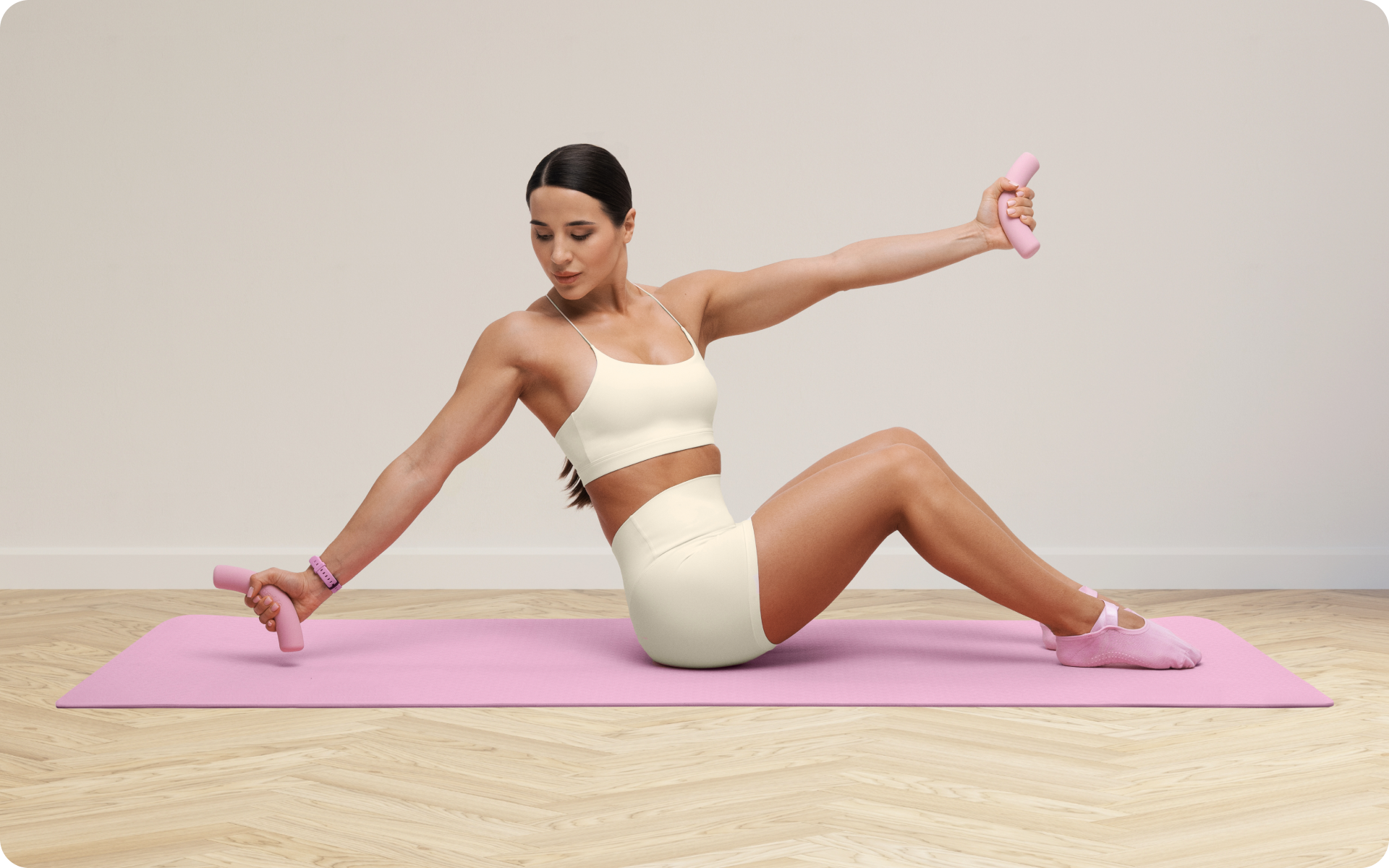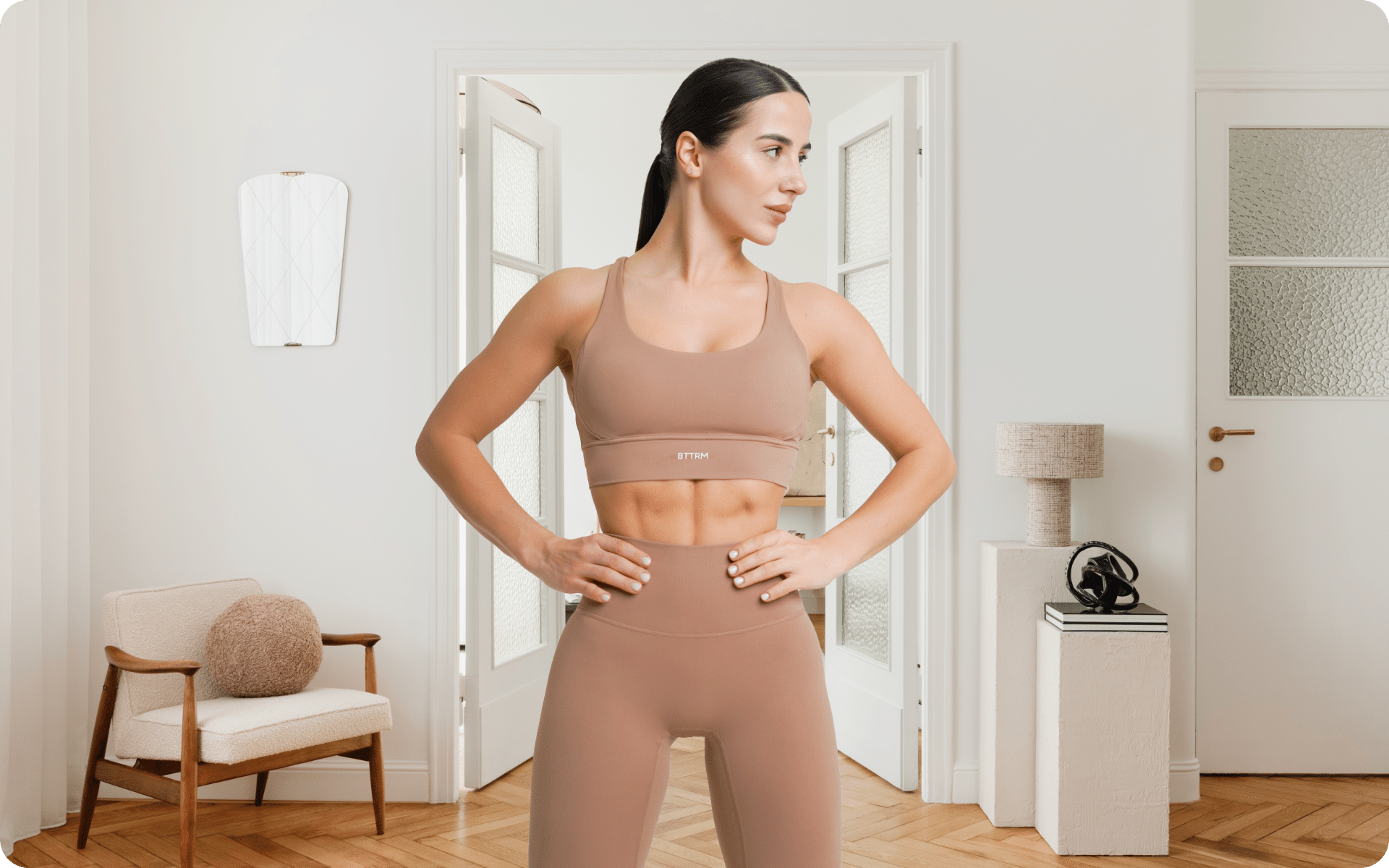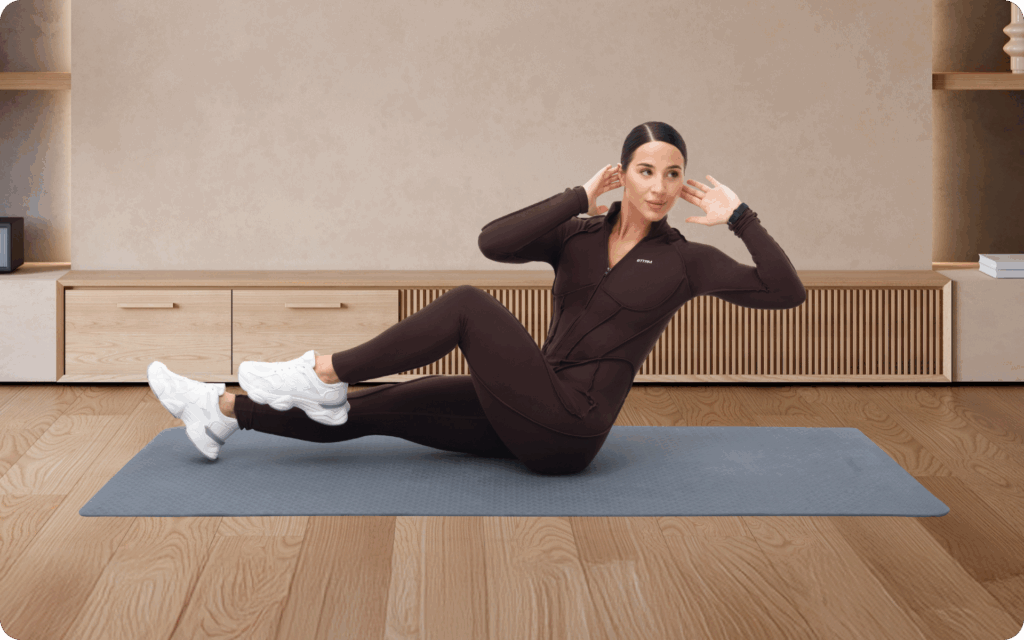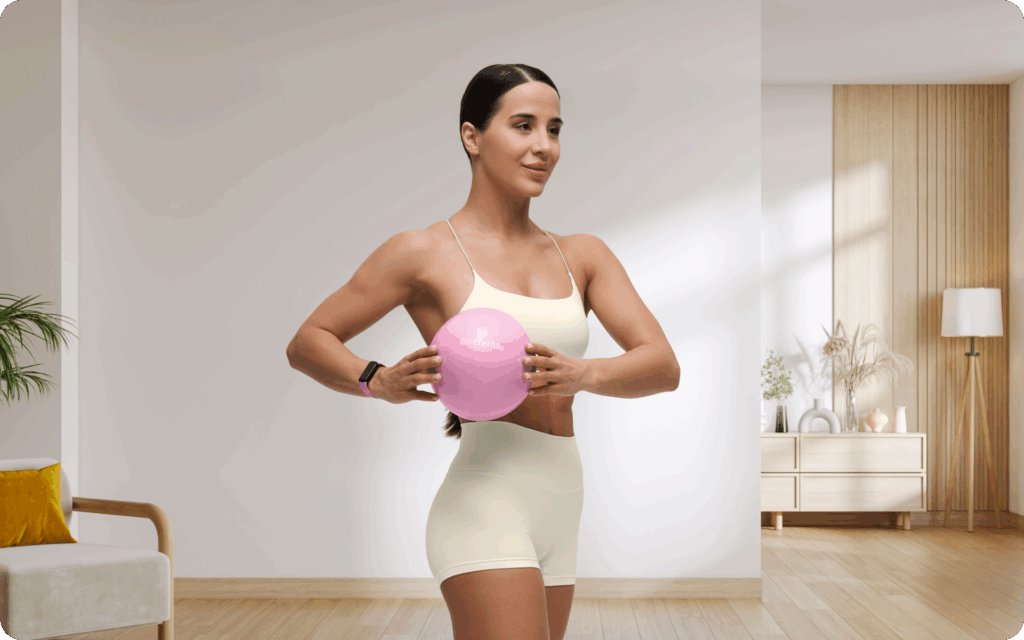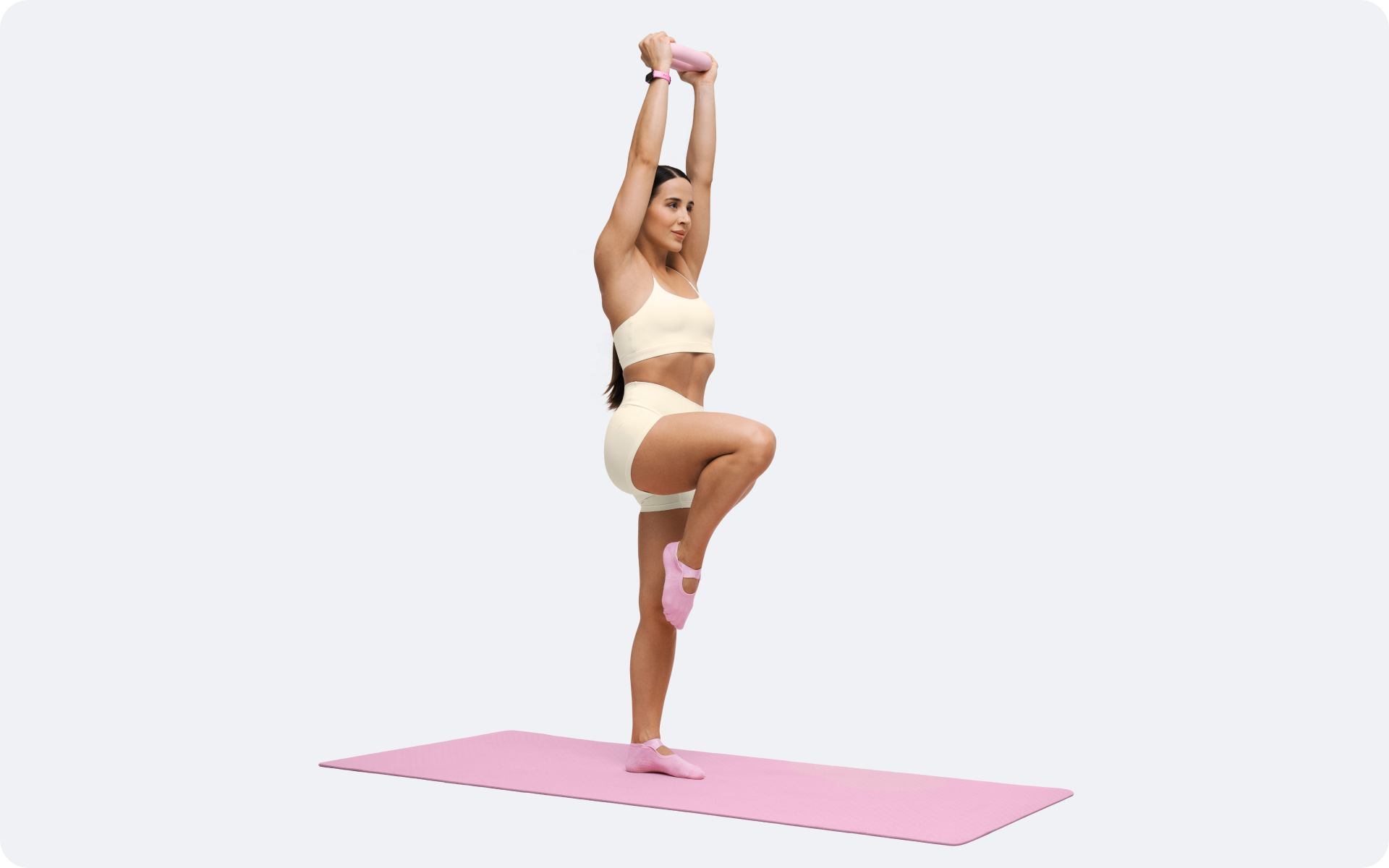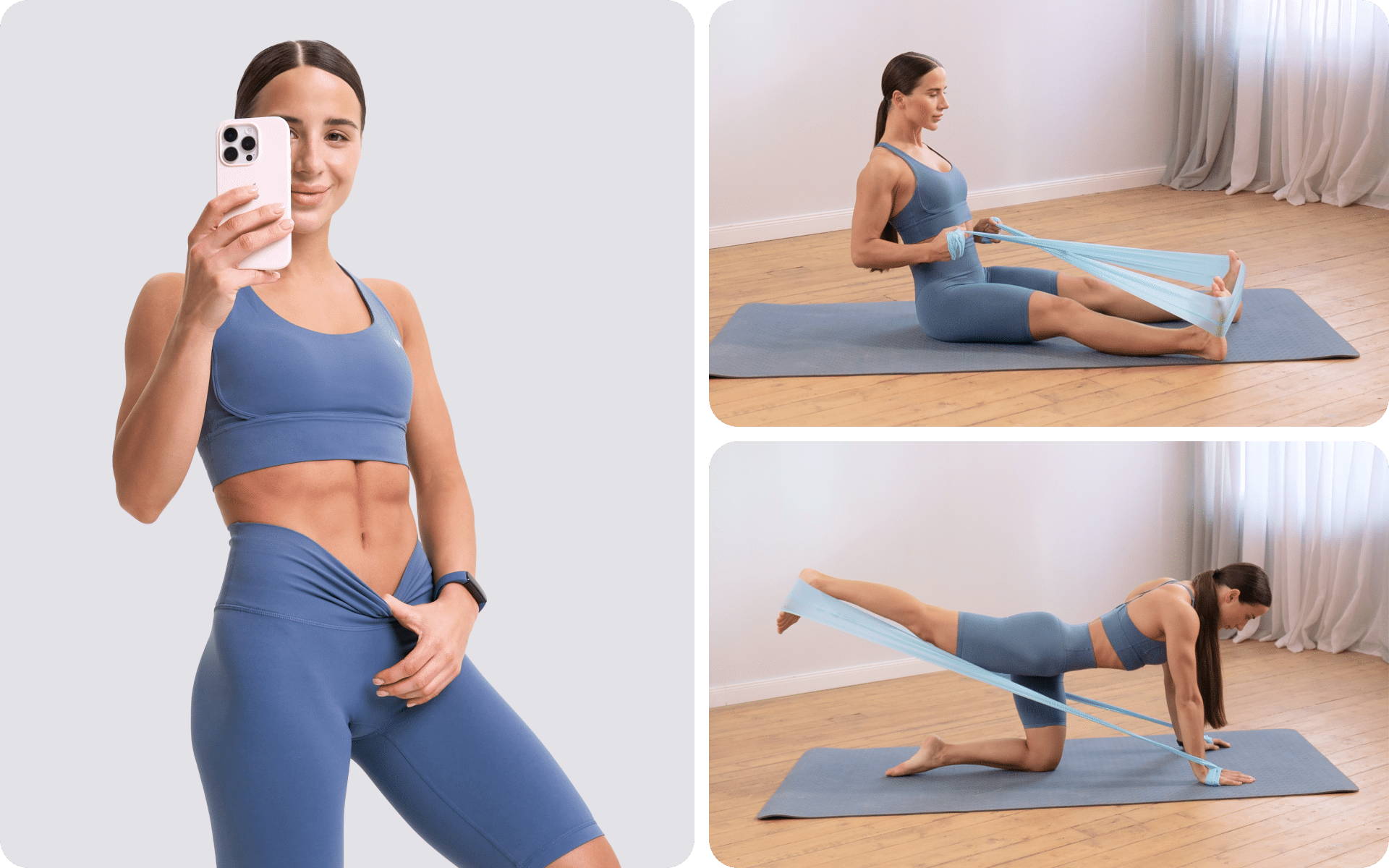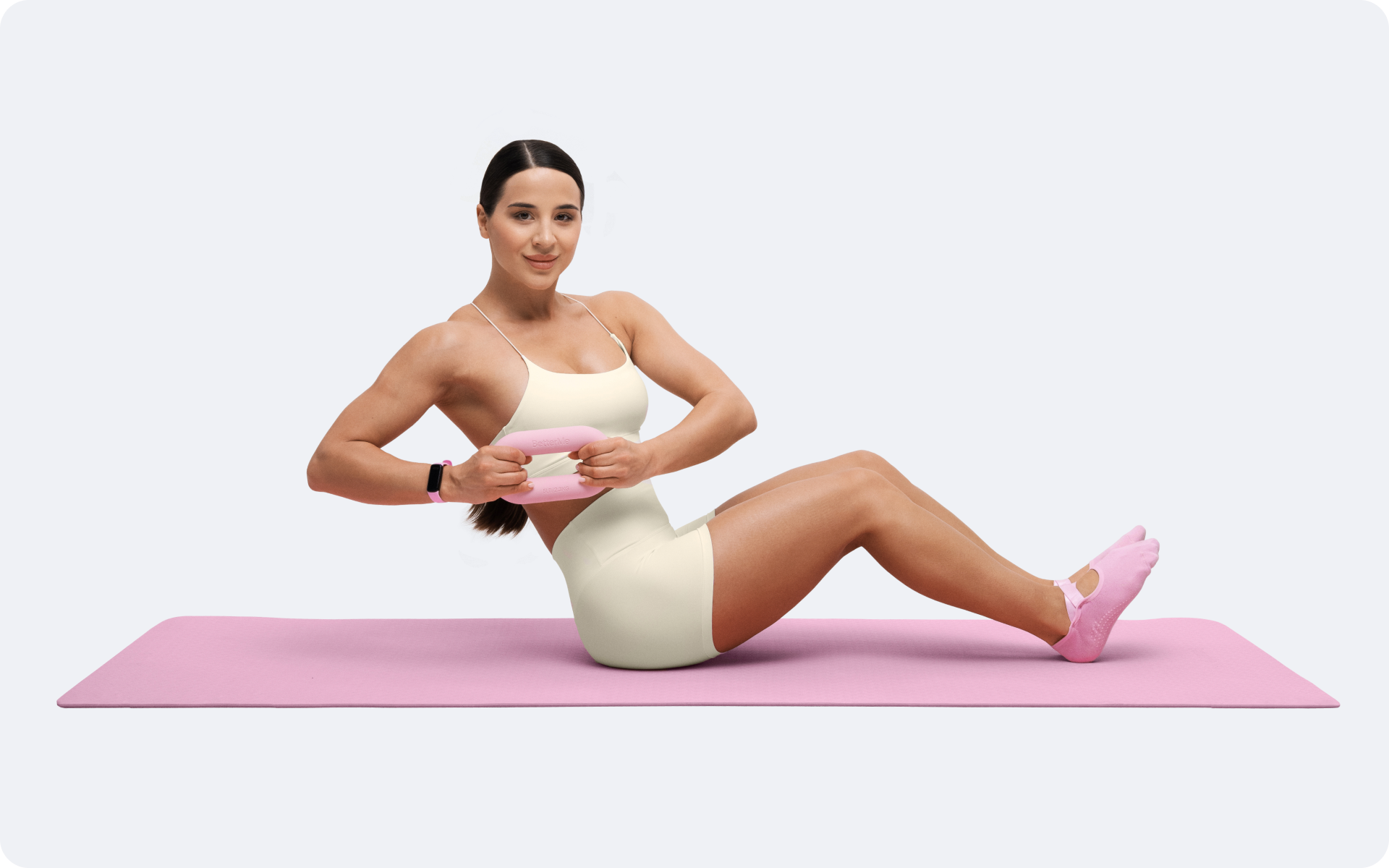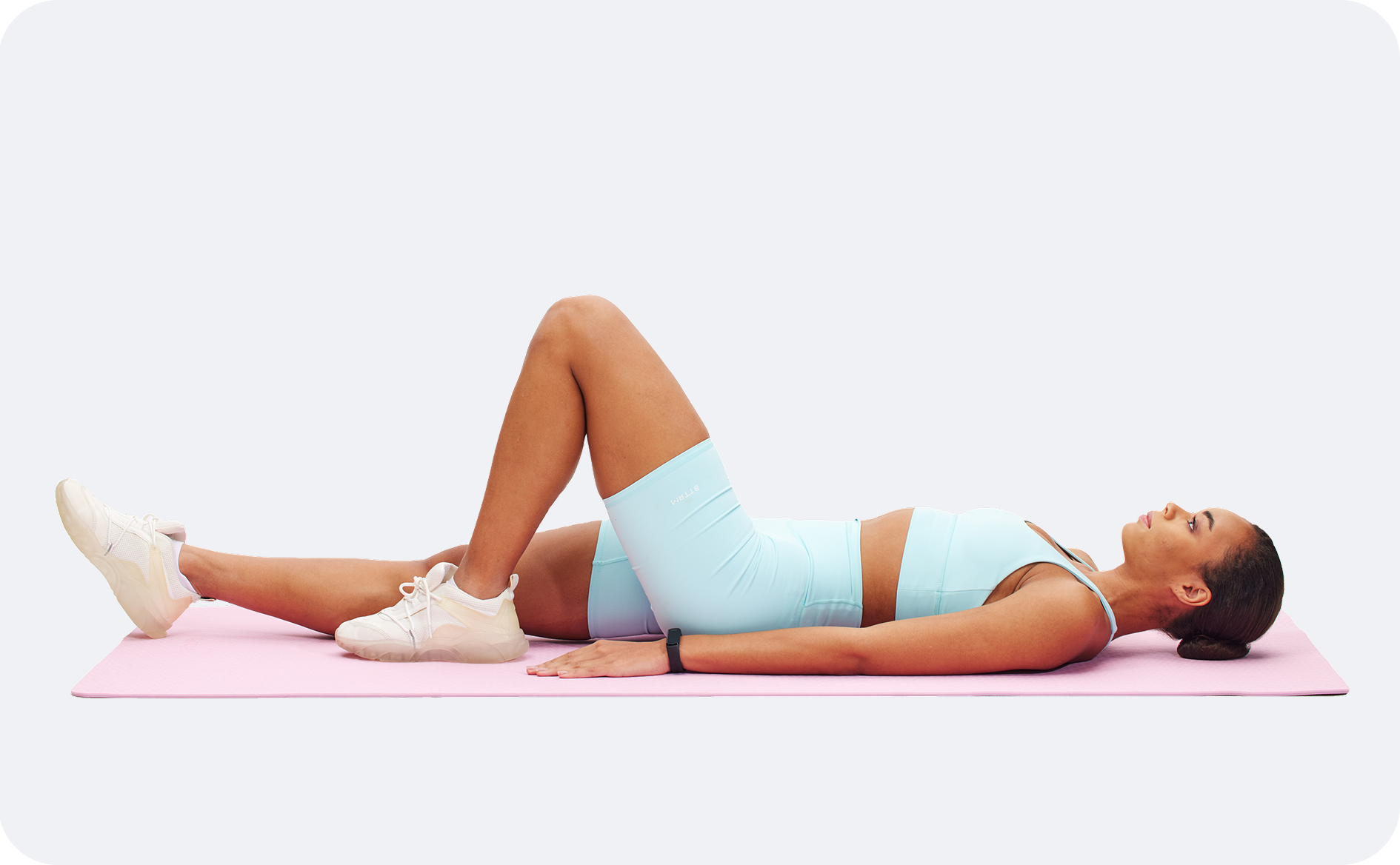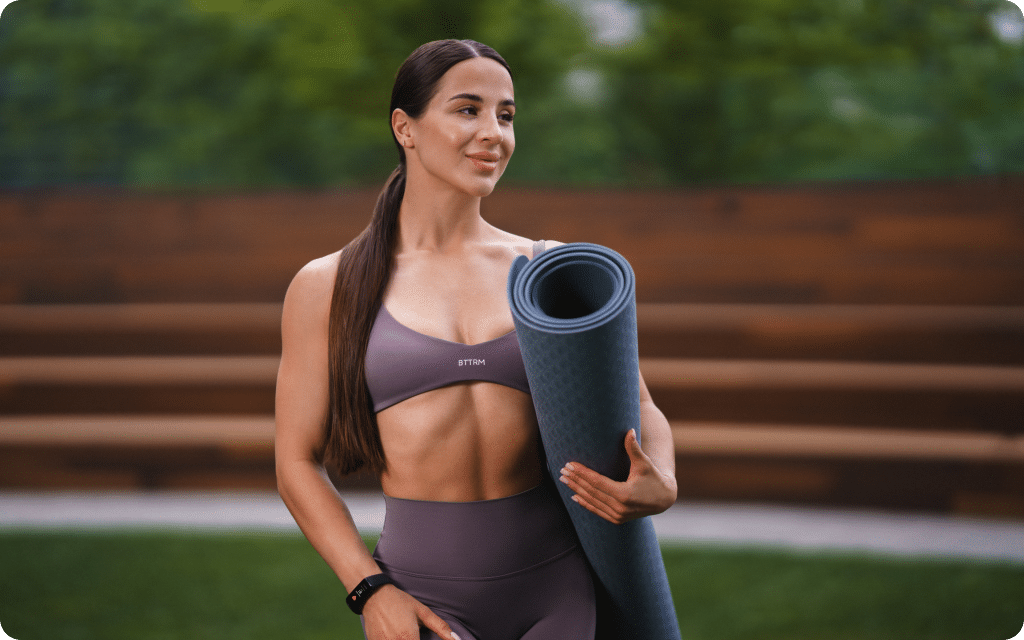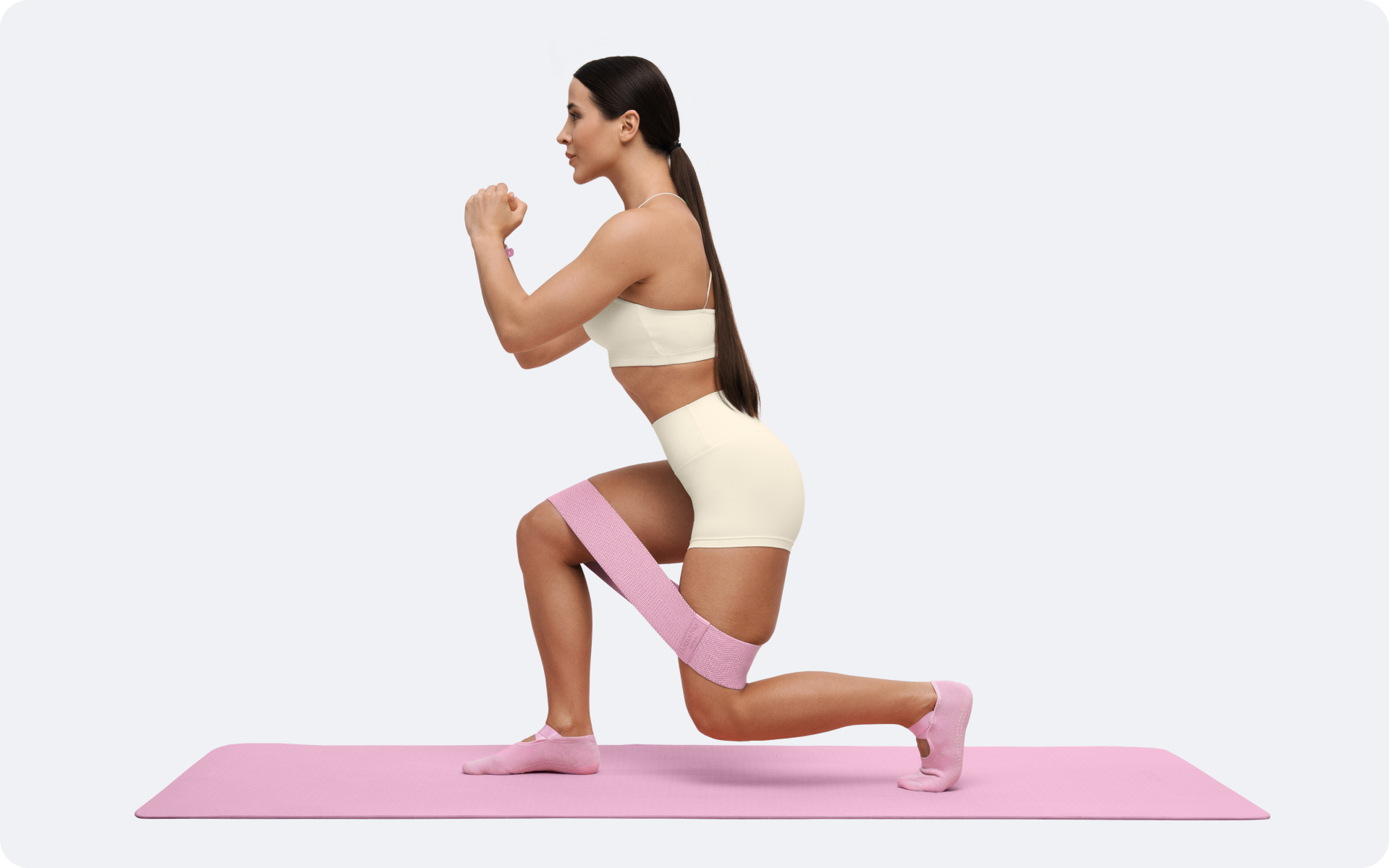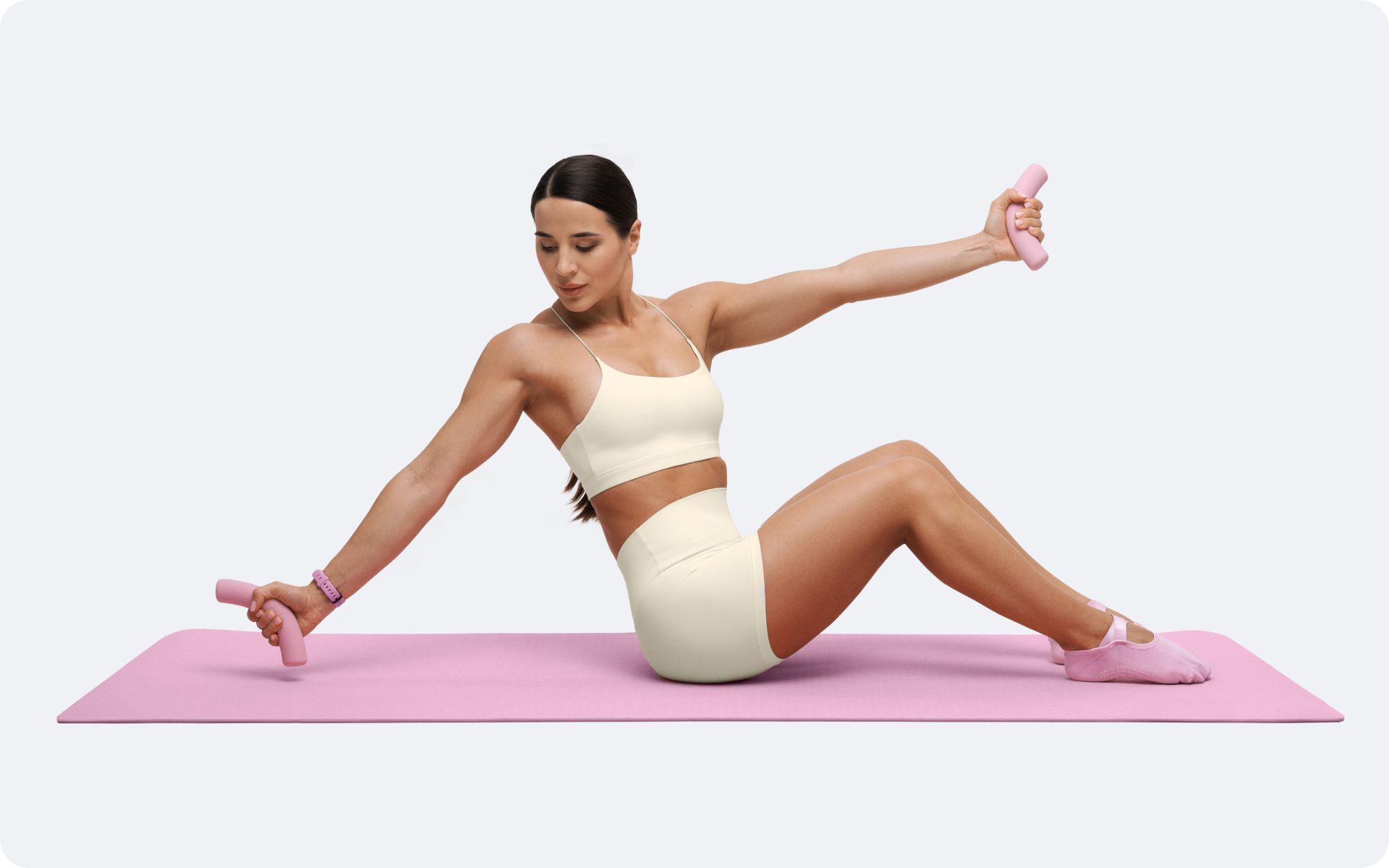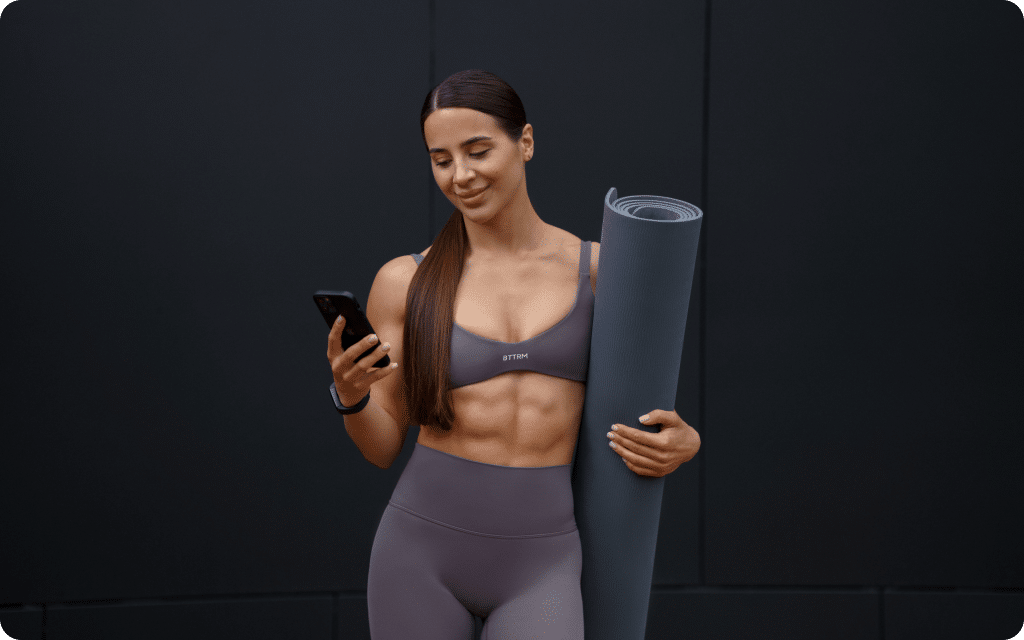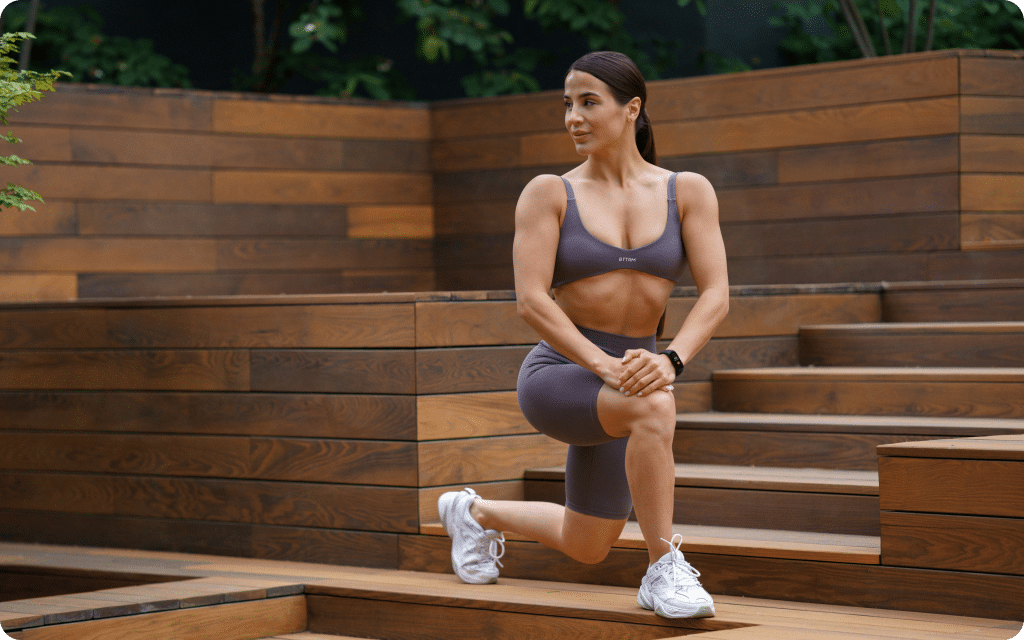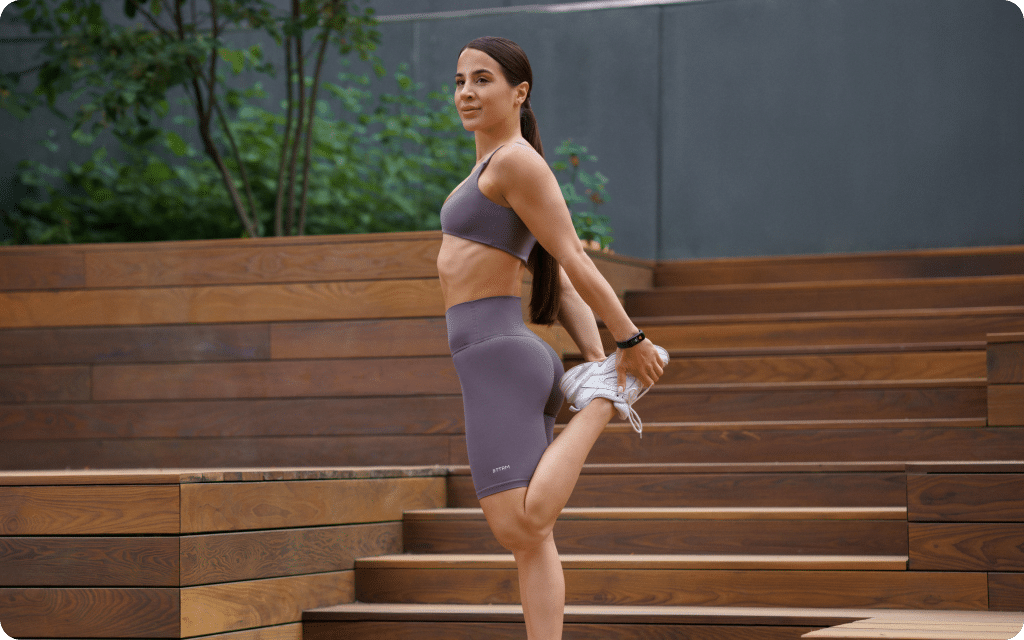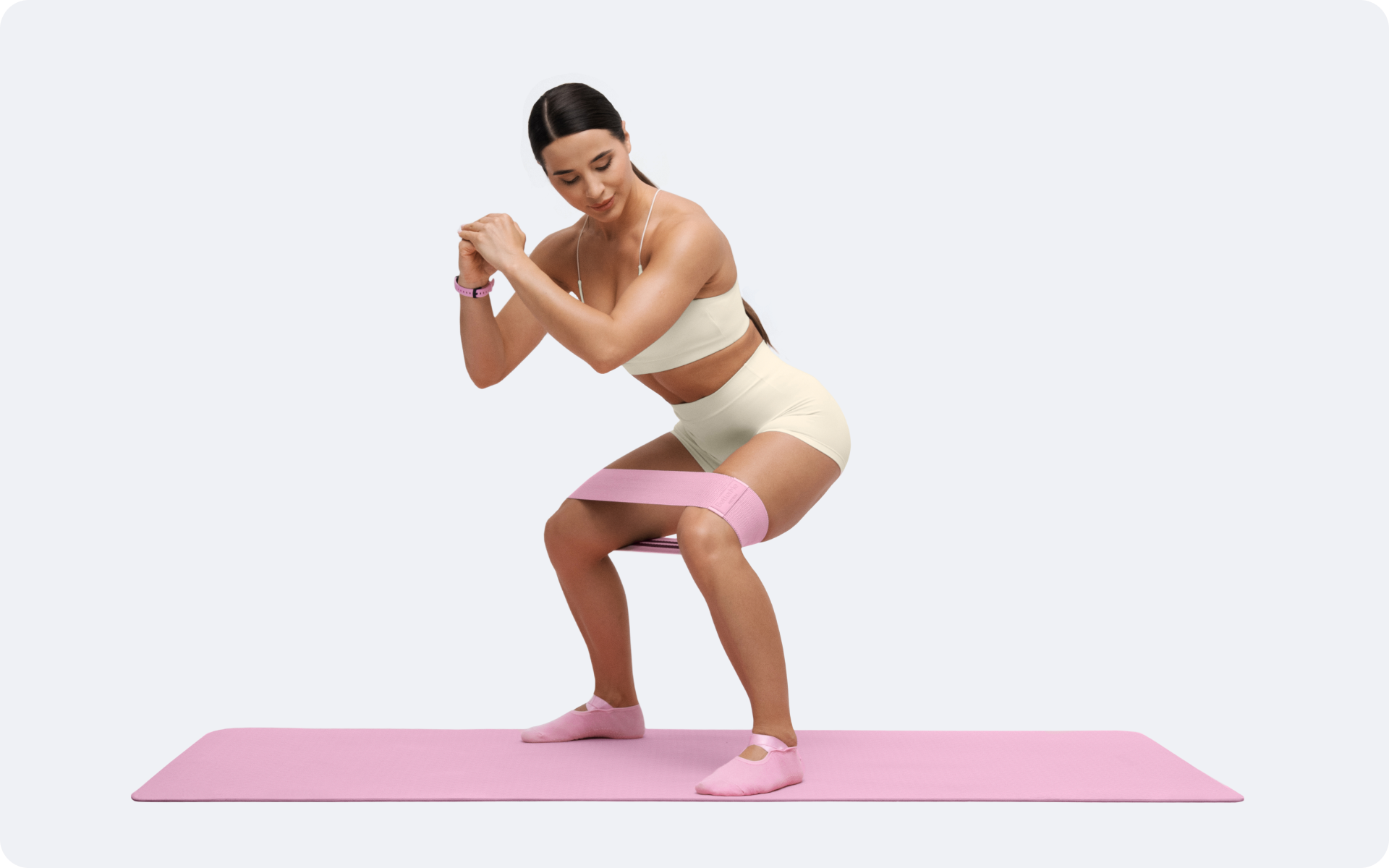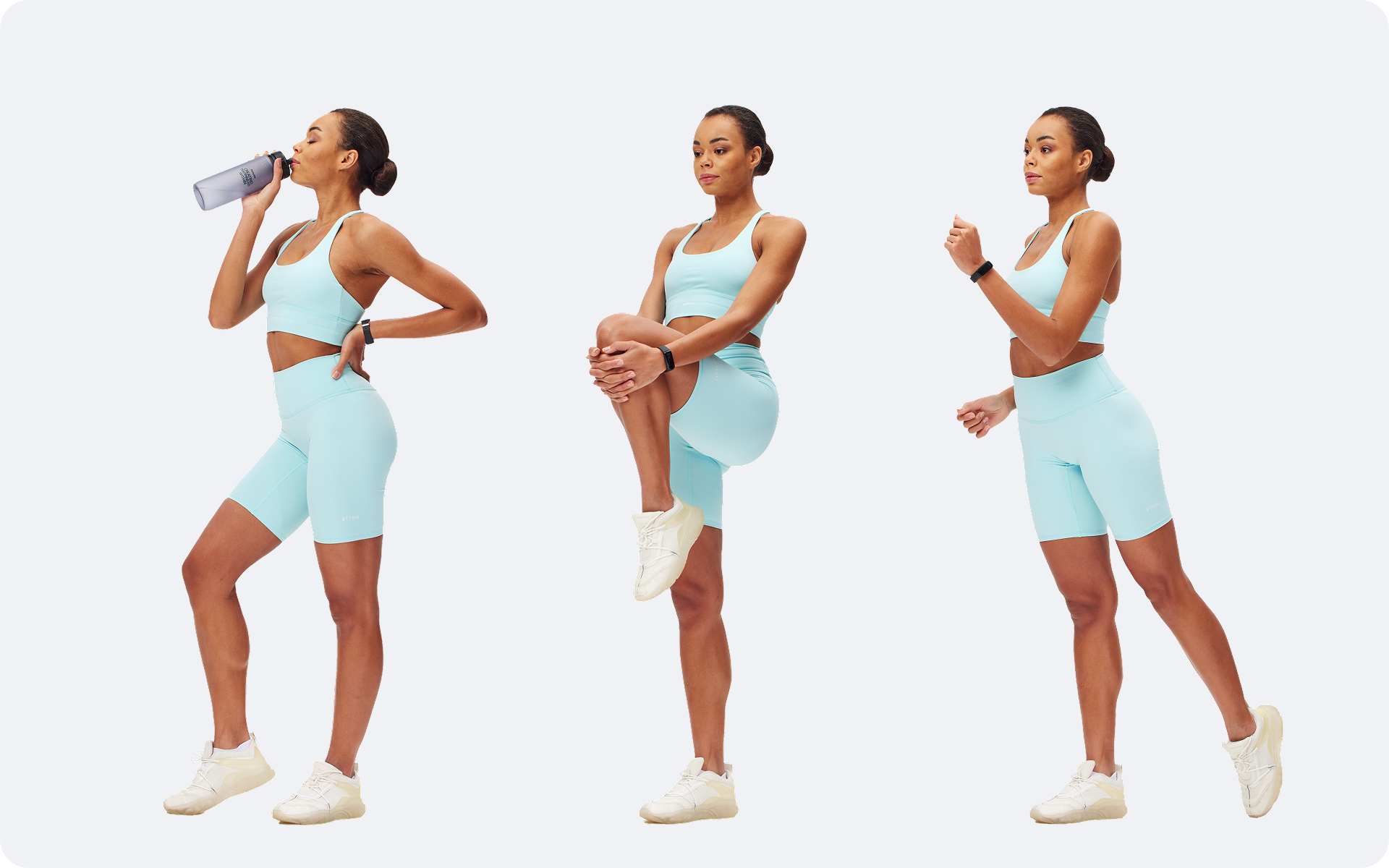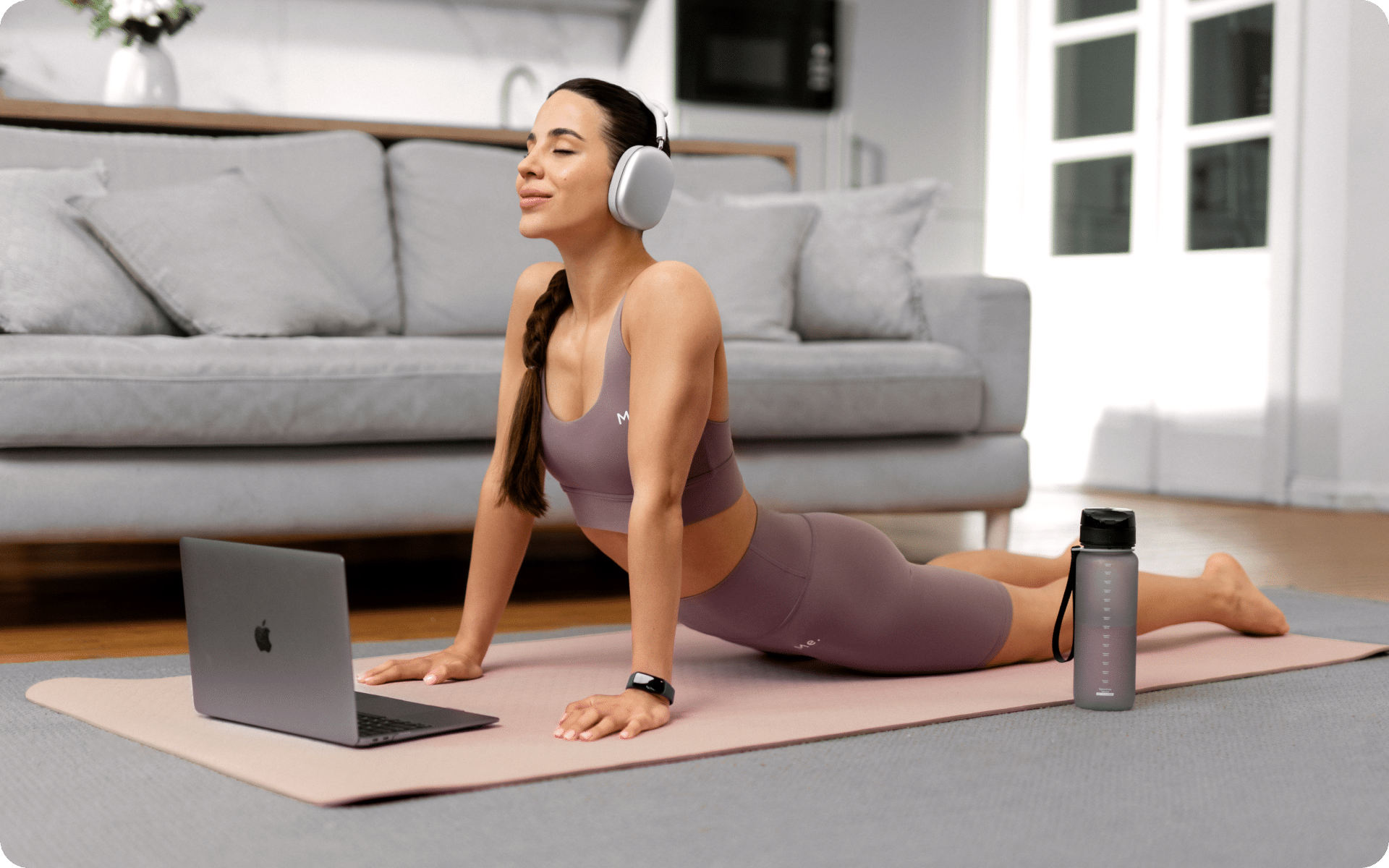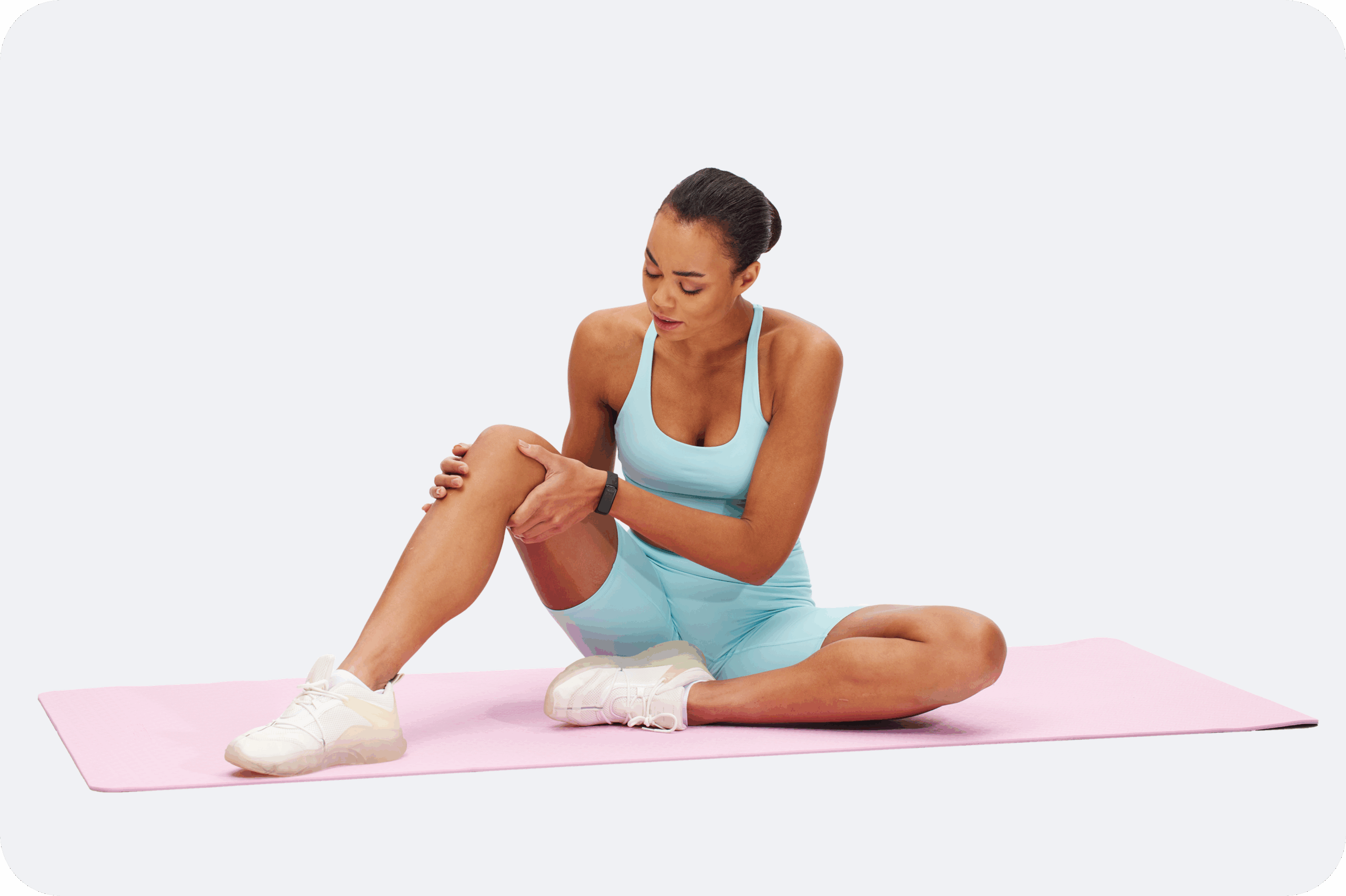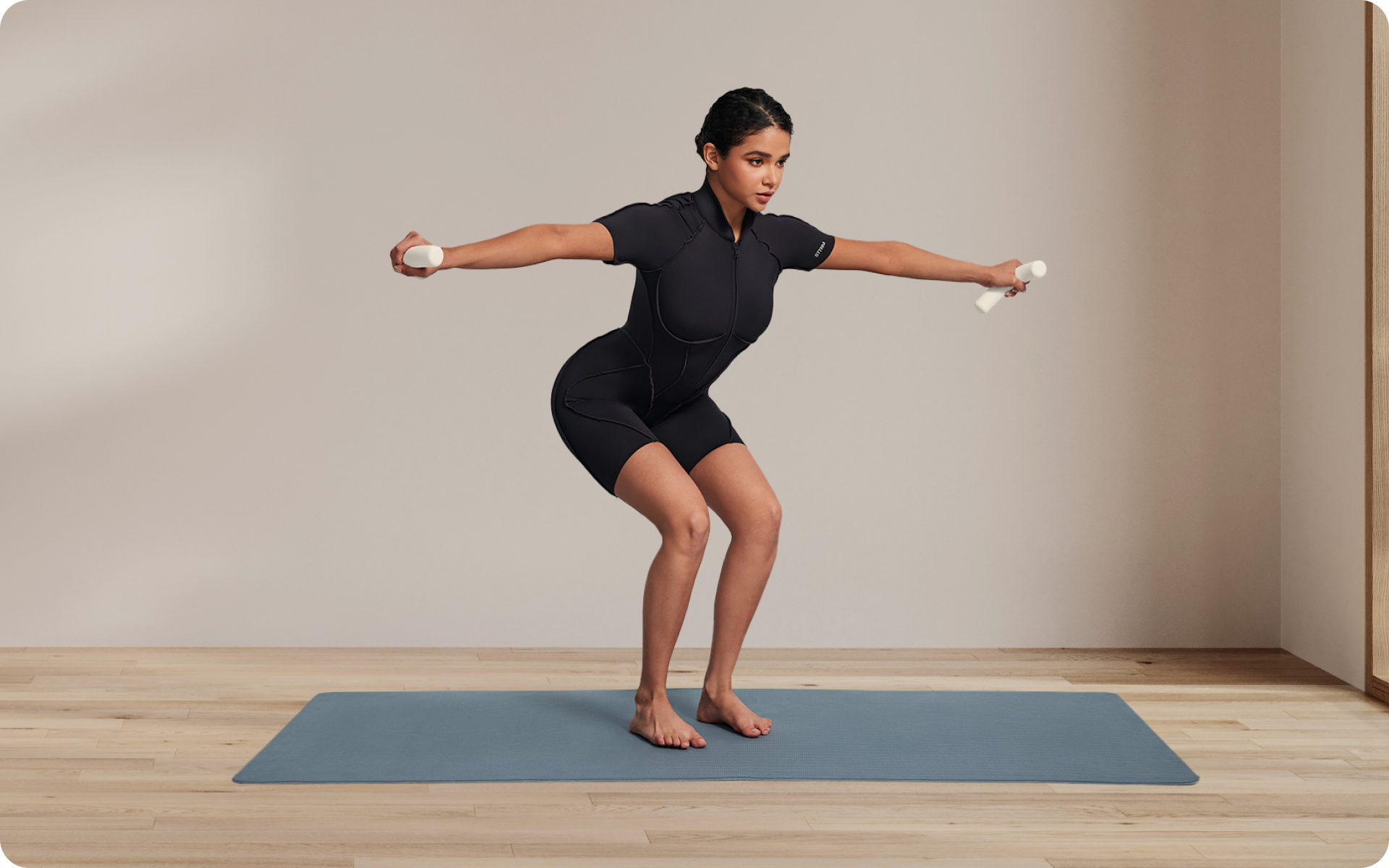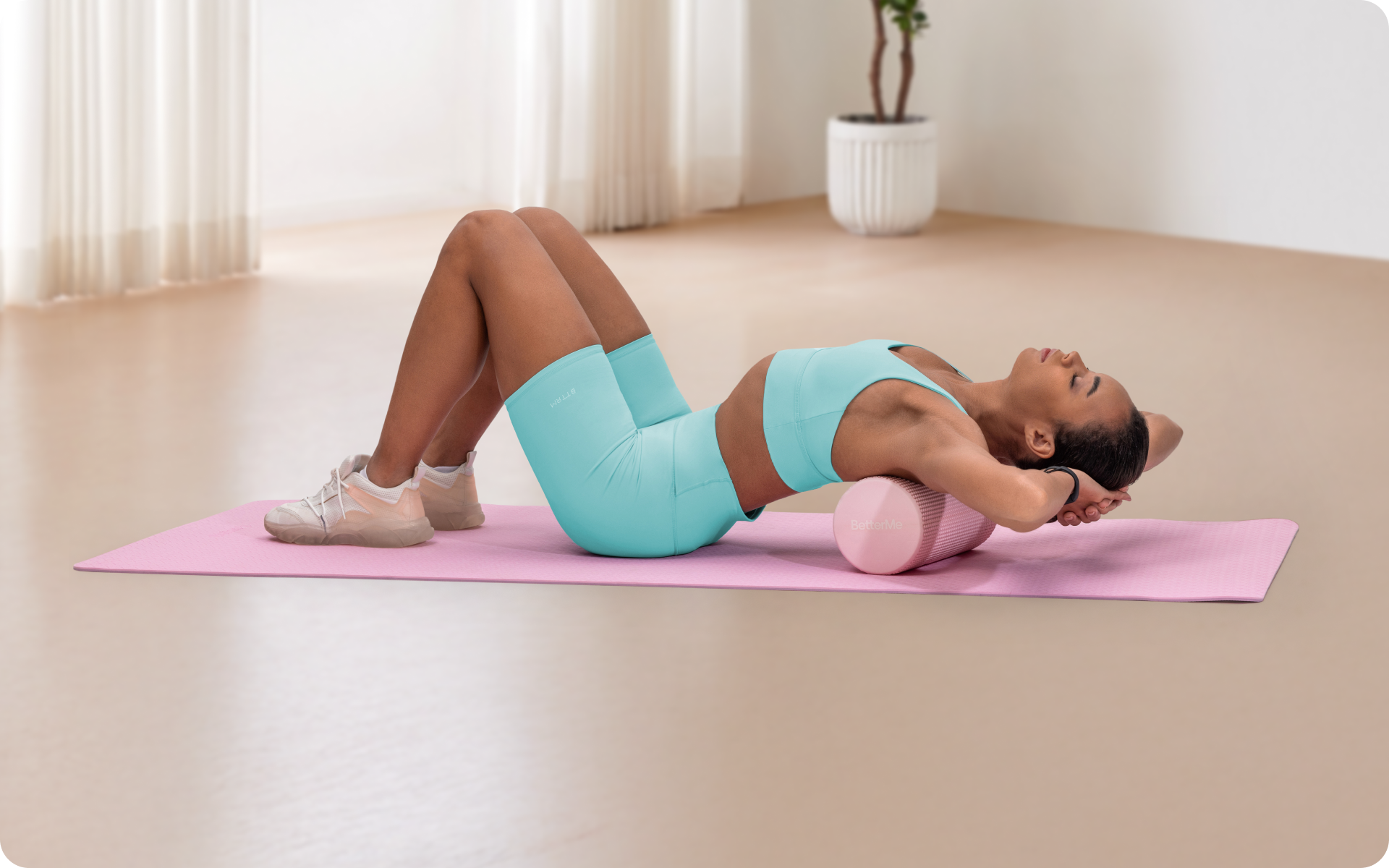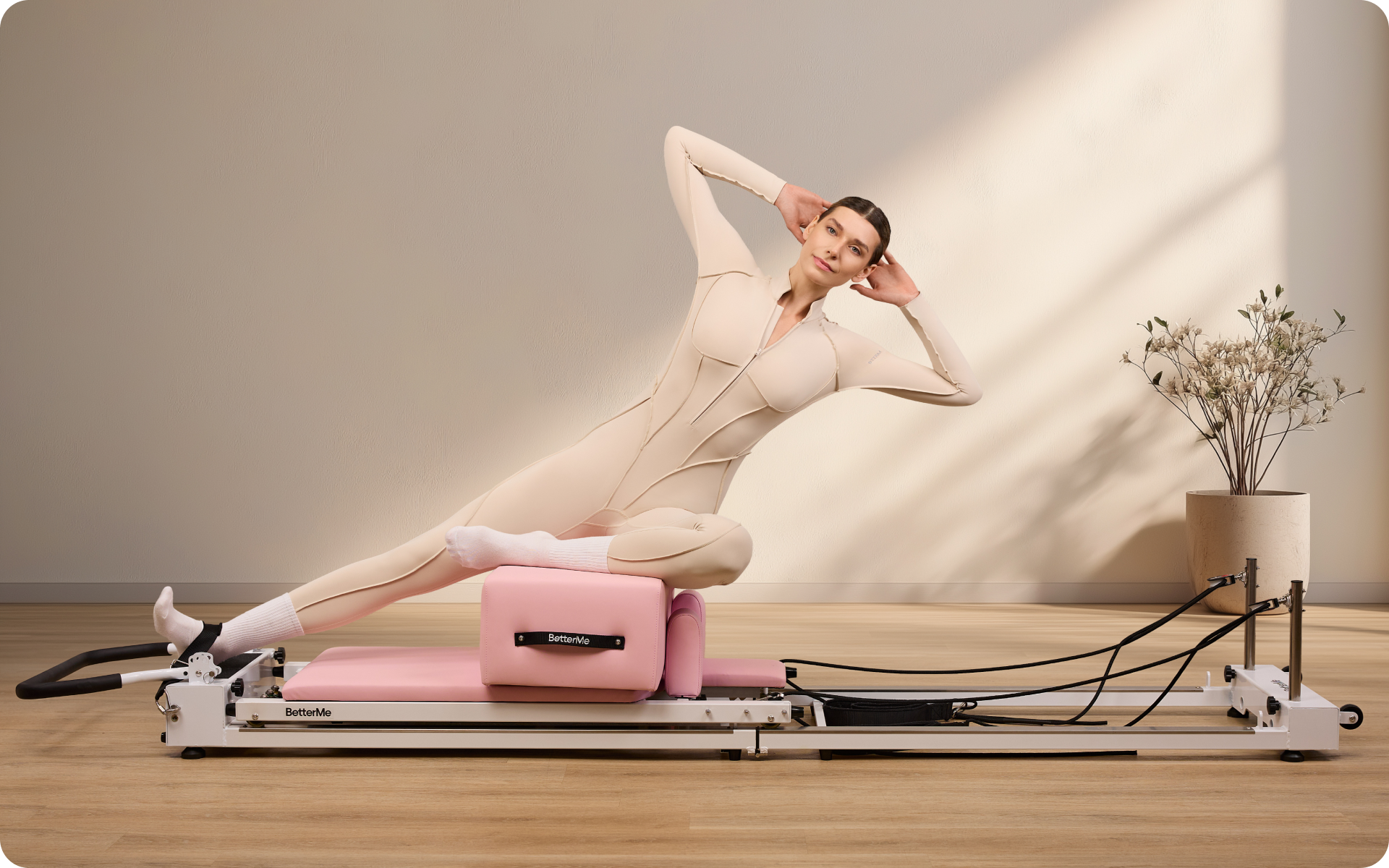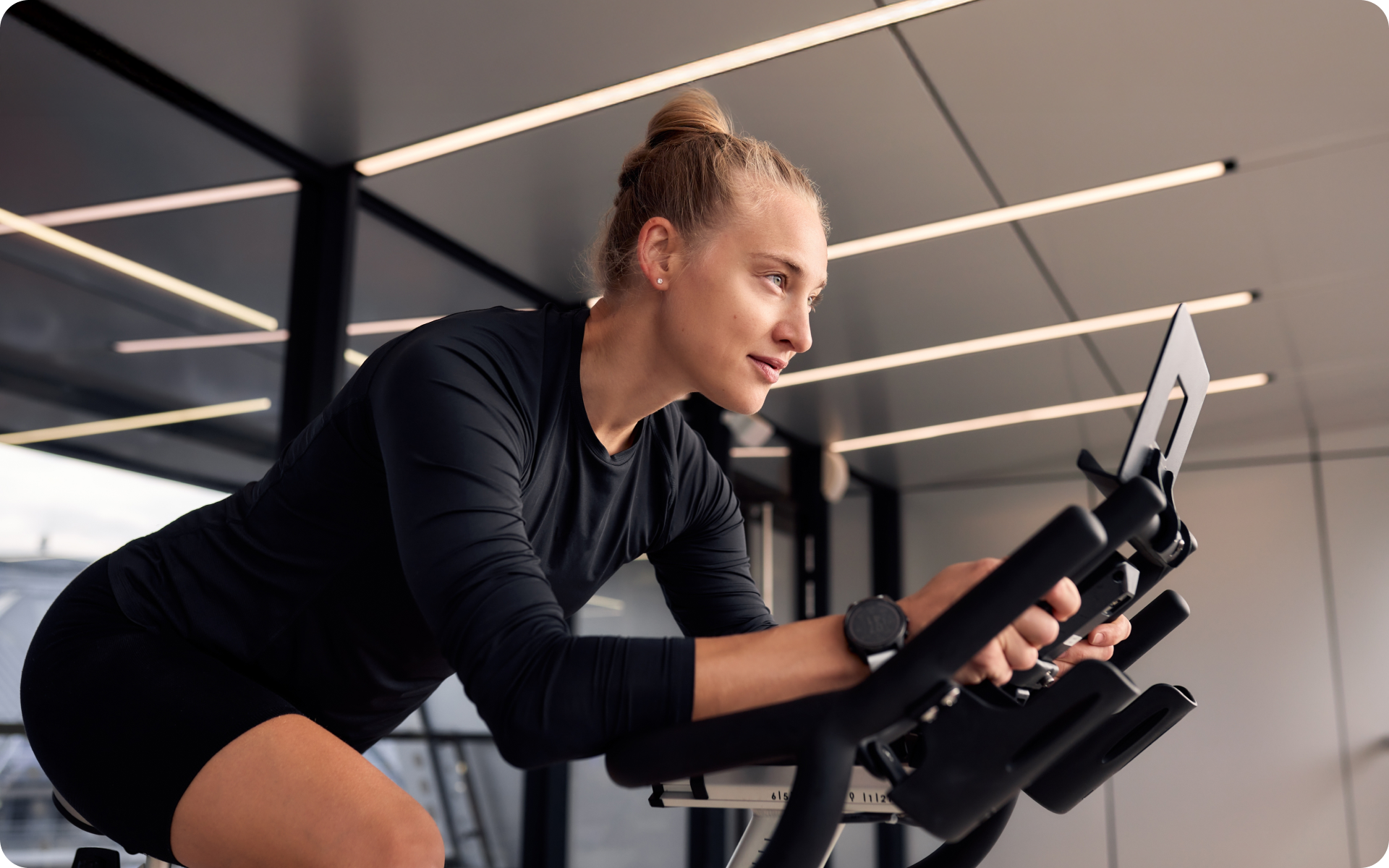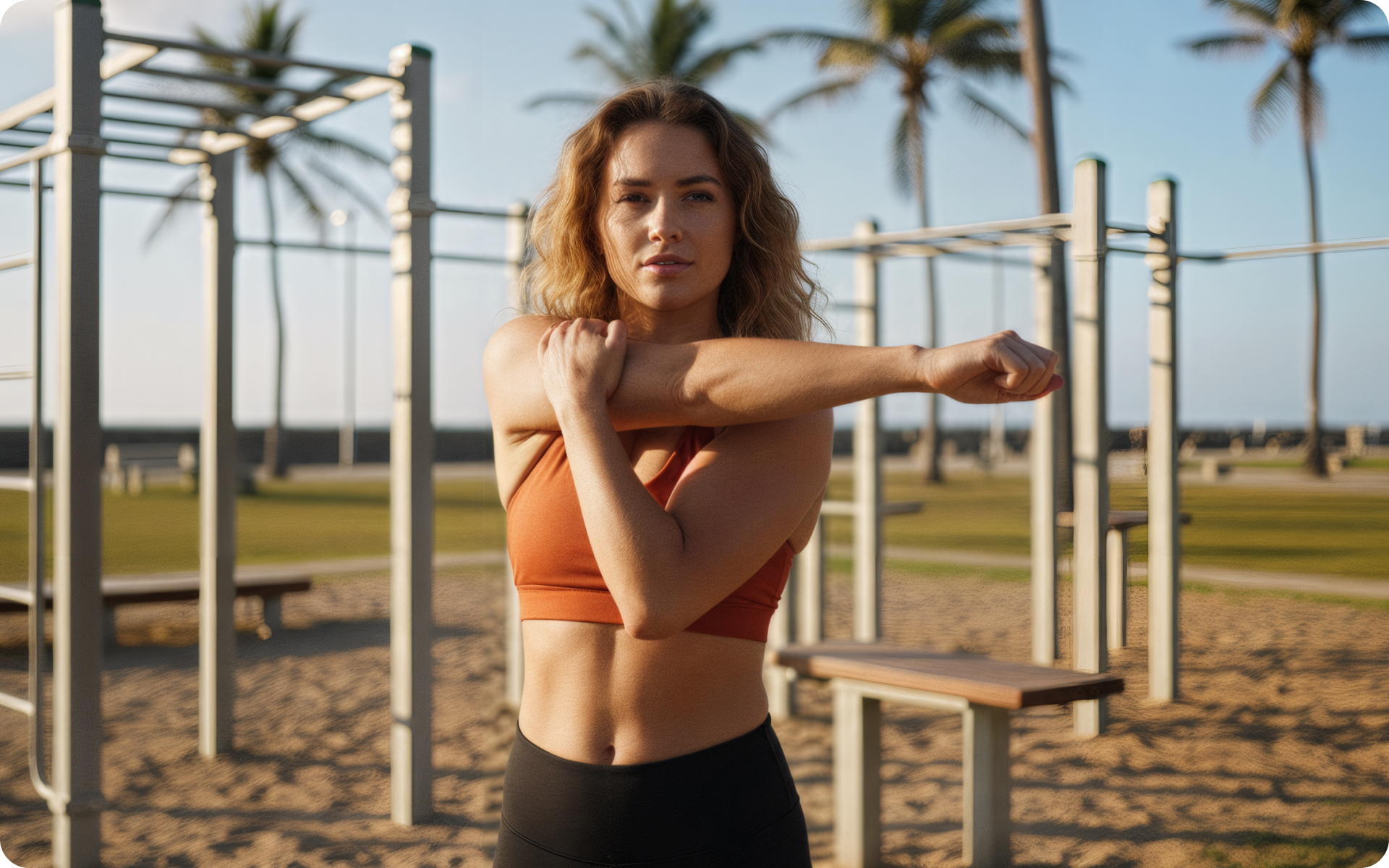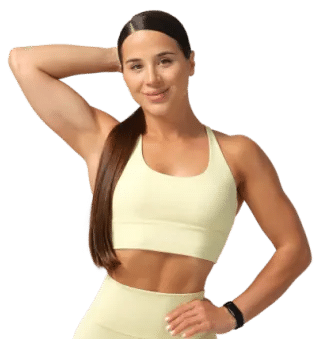Building a home workout routine can be a game-changer, especially if you’re using one of the most versatile tools available: dumbbells.
Dumbbells allow you to perform a wide range of movements that engage multiple muscle groups, improve coordination, and build functional strength.
For those new to fitness, they provide the control and flexibility needed to learn proper form and technique. For experienced gym-goers, they remain an indispensable tool for refining strength and stability.
This guide will walk you through a beginner-friendly dumbbell-only workout routine you can do in the comfort of your home. We designed this routine to help you build a solid foundation, emphasizing practical exercises, proper form, and manageable progression.
Can A Home Workout Be As Effective As The Gym?
Home workouts can be effective. For many people, they are a practical option that removes barriers like time, cost, and travel. With tools like dumbbells, resistance bands, and bodyweight exercises, you can train all major muscle groups.
For beginners, home workouts are particularly beneficial since they allow you to focus on learning proper form without external distractions.
Another advantage of home training is consistency. Having immediate access to your workout space means fewer excuses to skip sessions. And consistency is the foundation of physical progress, regardless of where you train (1).
The Limitations Of Home Workouts
That said, home workouts do have limitations. Most notably, you may lack access to specialized equipment, such as squat racks or cable machines, which are typically provided by gyms. For advanced lifters, this can make it challenging to overload progressively, which is a key principle for building strength and muscle (2).
Additionally, the home environment may not always provide a conducive climate for focus. When trying to balance fitness with the demands of family, work, or relaxation, staying mentally engaged in your routine can be a challenge.
Read more: The Ultimate Mat Pilates Exercises Guide for Beginners
How Home Workouts Compare To Gym Training
From a strength and conditioning perspective, both environments can deliver results.
The effectiveness of your workout ultimately comes down to:
- Your program: Are you following a structured plan that aligns with your goals?
- Variety in exercises: Are you incorporating both compound and isolation movements to target your muscles effectively?
- Progression: Are you gradually increasing resistance or intensity?
- Recovery and effort: Are you pushing yourself enough, while also managing recovery?
In controlled studies, home-based programs utilizing basic equipment, such as dumbbells, have demonstrated similar strength gains to gym-based programs, particularly for beginners. However, advanced trainees often require heavier loads and a greater variety of equipment to continue progressing.
BetterMe: Health Coaching app helps you achieve your body goals with ease and efficiency by helping to choose proper meal plans and effective workouts. Start using our app and you will see good results in a short time.
Choosing What Works Best For You
Ultimately, the decision comes down to your personal goals, preferences, and resources:
- If you value convenience, affordability, or a quieter setting, home workouts are a strong option.
- If you thrive on variety, heavier equipment, or the motivation of a group setting, you may benefit more from a gym.
Remember, it’s not an either/or decision for life. Some people start at home and transition to the gym as they progress. Others combine both to maintain a flexible routine.
What matters most is a commitment to movement. Whether at home or in the gym, a well-thought-out program, consistent effort, and adherence to proper form can help you achieve your fitness goals.
Can You Build Muscle At Home Instead Of Gym?
Muscle growth depends more on the quality of your routine than the location.
If your home workouts integrate resistance, progressive overload, and recovery, they can build muscle.
How Muscle Growth Happens
Muscle growth occurs when you place stress on your muscle fibers, causing small-scale damage (3). This minor damage triggers a repair process, where your body rebuilds those fibers thicker and stronger.
The key elements driving this muscle-building process are:
- Mechanical tension: The load your muscles experience during resistance exercises.
- Metabolic stress: The buildup of byproducts, such as lactic acid, from repeated muscle contraction.
- Muscle damage: Microtears caused by challenging exercises.
For home workouts, the goal is to stimulate these exact mechanisms through intelligent training with tools like dumbbells, resistance bands, or even body weight.
Role Of Progressive Overload
One non-negotiable principle for muscle growth is progressive overload.
This progression involves gradually increasing the demands on your muscles so they continue to adapt (2).
You can practice progressive overload at home by:
- Adding resistance: Progressively using heavier dumbbells or increasing band tension.
- Increasing reps and sets: Gradually doing more work per exercise.
- Modifying tempo: Slowing down the movement to enhance muscle tension.
- Decreasing rest intervals: Reducing recovery time between sets.
The environment doesn’t determine progressive overload. Instead, it’s about how well you implement this principle in your routine.
Exercise Variety Matters
Muscle growth requires targeting all major muscle groups from different angles (4).
At home, you can still achieve this with a bit of creativity.
For example:
- Suitcase and goblet squats for legs.
- Dumbbell rows or inverted rows for your back.
- Push-ups or dumbbell presses for the chest.
- Bicep curls and tricep kickbacks for arms.
Variations in movement patterns keep your muscles engaged and prevent plateaus from occurring.
While muscle growth at home is achievable, there are some challenges:
- Heavier loads: Advanced lifters might struggle without access to barbells or machines for heavy lifting.
- Limited equipment variety: Can make progressive overload or isolating muscles slightly more complex.
A home gym calisthenics routine beginners and intermediates can provide enough resistance to build size and strength.
How To Get In Shape Just Working Out At Home?
Getting in shape at home is not only possible but can be highly effective if approached with the right strategy. The best home gym workout routine is the one that delivers results.
Start With Clear Goals
The first step is to define what “getting in shape” means for you.
Are you aiming to lose fat, build muscle, improve flexibility, or boost cardiovascular fitness? Your goals will guide the structure of your workouts.
For example:
- To build strength, prioritize resistance exercises with dumbbells or body weight.
- For fat loss, combine resistance training with high-intensity circuits or cardio.
- To boost flexibility and mobility, include dynamic stretches and yoga-based movements.
Setting realistic, measurable goals helps you stay motivated and track progress over time.
Choose The Right Exercises
Your exercise selection plays a significant role in achieving results.
Use compound movements (exercises that work multiple muscle groups) as the foundation for your routine. These are efficient and stimulate more muscles in less time.
Key compound movement examples:
- Lower Body: Squats, lunges, and glute bridges.
- Upper Body: Push-ups, dumbbell rows, and shoulder presses.
- Core: Planks, sit-ups, and Russian twists.
- Cardio: Jumping jacks, burpees, or step-ups.
A balanced workout incorporates all major muscle groups to prevent imbalances and injuries.
Follow A Structure
Consistency is key for any fitness goal. A structured routine ensures you’re training consistently while balancing intensity and recovery.
A sample weekly schedule might look like this:
- Day 1: Full-Body Strength (dumbbell or bodyweight exercises)
- Day 2: Cardio and Core
- Day 3: Rest or Active Recovery (light stretching or yoga)
- Day 4: Upper Body and Core
- Day 5: Lower Body and Cardio
- Day 6: Rest or Active Recovery
- Day 7: Total-Body Circuit (a mix of strength and cardio)
Alternate rest and active days to avoid overtraining while staying consistent.
Master Progressive Overload
Progressive overload is essential for improvement and muscle hypertrophy. This principle states that you need to increase the challenge of your workout over time to continue seeing results (2).
At home, you can apply progressive overload by:
- Adding resistance: Use heavier weights or double the resistance of the bands.
- Increasing reps or sets: Gradually perform more work at the same intensity.
- Slowing tempo: Perform movements more slowly to intensify muscle tension.
- Shortening rest periods: Reduce recovery time between sets for a cardio-strength effect.
Track your workouts to ensure you’re implementing progression in a controlled, measurable way.
Don’t Neglect Recovery
Improvement happens during recovery, not during the workout itself. Sleep, nutrition, and active recovery help your body repair and adapt (5).
Tips For Effective Recovery:
- Get at least 7–8 hours of sleep per night.
- Hydrate well and eat nutrient-dense, protein-rich meals to support muscle repair.
- Include rest days or low-intensity activities, like walking or stretching.
Ignoring recovery can lead to fatigue, plateau, or even injury.
Stay Consistent And Adaptable
Getting in shape at home is about consistency, not perfection. Life can throw curveballs, so remain adaptable. If a day doesn’t go as planned, pick up where you left off without guilt.
Tracking your progress through apps, journals, or simple notes helps you identify what’s working and what may need adjustments.
Read more: At Home Pilates Equipment Guide For Beginners: Here’s What You Need To Start
What Is A Scalable Home Gym Workout Routine?
Many ask the question, “What is a practical home gym workout routine that adapts to your fitness level over time?”
We want you to know that whether you or a trainer is creating a home gym workout routine female or male-focused, it can continuously adapt to your current fitness level.
Below is a weekly program that utilizes basic equipment, such as dumbbells and body weight. This routine is scalable, meaning you can adjust the load, repetitions, and intensity as you progress.
Weekly Workout Program
Day 1: Full-Body Strength
- Dumbbell Goblet Squats: 3 sets of 10–12 reps
- Push-Ups: 3 sets of 8–10 reps
- Dumbbell Renegade Row: 3 sets of 10–12 reps per arm
- Plank to Shoulder Taps: 3 sets of 30 seconds
Day 2: Cardio and Core
- Jumping Jacks: 3 rounds of 60 seconds
- Alternating Lunge Jumps: 3 sets of 20 reps
- Russian Twists (body weight or holding a dumbbell): 3 sets of 16 twists (8 per side)
- Mountain Climbers: 3 rounds of 30 seconds
Day 3: Rest or Active Recovery
- Light yoga or dynamic stretching for 15–20 minutes
Day 4: Upper Body and Core
- Dumbbell Shoulder Press: 3 sets of 10–12 reps
- Chest Fly: 3 sets of 8–12 reps
- Dumbbell Bicep Curls: 3 sets of 12–15 reps
- Forearm Plank: 3 sets of 30–45 seconds
Day 5: Lower Body and Cardio
- Dumbbell Romanian Deadlifts: 3 sets of 10–12 reps
- Dumbbell Suitcase Squats: 3 sets of 10–12 reps
- Step-Ups (using a stable chair or bench): 3 sets of 8–10 reps per leg
- Burpees (with or without dumbbells): 3 rounds of 10–12 reps
Day 6: Rest or Active Recovery
- Light walking, stretching, or mobility work for 15–20 minutes.
Day 7: Total-Body Circuit
Complete 3 rounds of the following with 90 seconds rest between rounds:
- Dumbbell Thrusters (squat to shoulder press): 10 reps
- Incline Push-Ups: 10 reps
- Dumbbell Rows: 10 reps per arm
- Skater Hops: 10 reps per side
- Holding Plank with Knee Drives: 30 seconds
Exercise Instructions
Dumbbell Goblet Squats
- Hold a dumbbell close to your chest with both hands.
- Stand with your feet shoulder-width apart.
- Lower your hips back and down as if sitting on a chair, keeping your chest upright.
- Push through your heels to return to a standing position.
Dumbbell Rows
- Hold a dumbbell in one hand, hinge at your hips, keeping your back flat.
- Pull the dumbbell toward your waist, squeezing your shoulder blades back.
- Slowly lower the dumbbell.
Plank To Shoulder Taps
- Begin in a high plank.
- Lift one hand to tap the opposite shoulder, keeping your hips steady.
- Alternate sides.
When it comes to weight loss, progress is made by inches, not miles, so it’s much harder to track and a lot easier to give up. The BetterMe: Health Coaching app is your personal trainer, nutritionist, and support system all in one. Start using our app to stay on track and hold yourself accountable!
Jumping Jacks
- Stand upright with your arms at your sides.
- Jump, spreading your legs and raising your arms overhead.
- Jump again to return to the start.
Alternating Lunge Jumps
- Step one foot forward into a lunge, lowering your back knee.
- Jump to switch legs midair, landing in a lunge with the other foot forward.
Russian Twists
- Sit with your feet hovering above the floor and your torso leaning slightly back.
- Twist your upper body, tapping your hands (or a dumbbell) to the floor on each side.
Mountain Climbers
- Start in a high plank.
- Drive one knee toward your chest, then quickly switch legs.
Dumbbell Renegade Row
- Start in a high plank position with a dumbbell in each hand.
- Keep your core engaged and begin to row one arm towards your torso while keeping the other arm fully extended on the ground.
- At the top of the movement, squeeze your shoulder towards your spine and then slowly allow the weight to return to the ground.
- Repeat with the opposite arm.
Dumbbell Shoulder Press
- Hold dumbbells at shoulder height with palms facing forward.
- Press the dumbbells overhead until you fully extend your arms.
- Lower back to shoulder height.
Dumbbell Chest Fly
- While holding a dumbbell in each hand, lie on your back on an incline bench at a 30-45 degree angle.
- Position the dumbbells at chest height with your palms facing each other.
- Exhale and press both dumbbells out in front of you.
- Inhale and allow the dumbbells to move to your sides with control and your elbows slightly bent. This position should make a U shape with your arms.
- Exhale and focus on using your chest to push the dumbbells back to your center
Push-Ups
- Start in a high plank with your hands beneath your shoulders.
- Lower your chest until it’s just above the floor.
- Push back up while keeping a straight spine.
Incline Push-Ups
- Start in a high plank position with your hands on a bench or a sturdy box
- Keep your hands beneath your shoulders and engage your core.
- Bend your elbows and allow your body to lower towards the bench.
- Squeeze your shoulder blades at the bottom of this movement.
- Exhale as you extend your elbows and press your bodyweight back to the starting position.
Dumbbell Bicep Curls
- Hold a dumbbell in each hand with palms facing up.
- Curl both dumbbells up to your shoulders.
- Slowly lower back to the starting position.
Forearm Plank
- Place your forearms on the floor, with your shoulders above your elbows.
- Keep your body in a straight line from head to heels.
- Inhale through your chest and exhale through your stomach. Each exhale should further tighten the abdomen.
- Hold this position for 5 to 10 breaths
Dumbbell Romanian Deadlifts
- Hold dumbbells by your sides, palms facing your thighs.
- Hinge at your hips, lowering the dumbbells down your legs.
- Raise back to the starting position by pushing your hips forward.
Dumbbell Suitcase Squats
- Hold a dumbbell in each hand at your sides.
- Lower into a squat while keeping an upright posture.
- Push back to standing through your heels.
Step-Ups
- Step one foot onto a sturdy elevated surface, like a heavy chair, driving through your heel.
- Bring your other leg up to meet the first before stepping back down.
Burpees
- Start in a standing position.
- Drop into a squat, place your hands on the floor, and jump back into a plank.
- Jump back to the squat and explode upward into a jump.
Dumbbell Thrusters
- Hold dumbbells at shoulder height.
- Perform a squat.
- As you stand, press the dumbbells overhead in one fluid motion.
Jump Squats
- Start in a squat position.
- Drive through your legs to jump up, extending your arms for balance.
- Land softly and lower back into the squat.
Holding Plank With Knee Drives
- Begin in a high plank pose.
- Bring one knee toward your chest, then return to the starting position.
- Alternate sides while keeping your back straight.
Skater Hops
- Start in an athletic position with your head up, chest up, and knees slightly bent.
- Using the left leg, push off laterally and land on the right foot.
- Pause for two seconds on that right foot and then repeat the movement by pushing off laterally with the right foot.
- Exaggerate the follow-through of the hop. If you are jumping off your left foot, land on the right foot and allow the left foot to trail behind the right leg.
- Pro Tip: Think of how a speed skater does their stride. Try to mimic this movement for the exercise.
Is It Ok To Do A Home Workout Everyday?
The idea of working out every day might seem appealing, especially if you’re eager to maximize progress. However, when it comes to exercise, more is not always better.
The balance between effort and recovery is what drives sustainable results.
The Role Of Recovery
Recovery is not optional; it’s essential for progress. Every time you exercise, your body experiences small amounts of stress, such as muscle fatigue or microtears in the muscle fibers. These stresses only lead to improvement when your body has time to recover and rebuild (5).
Consistently skipping recovery can result in:
- Overtraining: A state where the body cannot fully repair, leading to fatigue, decreased performance, or even injury.
- Plateaus: A lack of improvement due to inadequate time for adaptation.
- Burnout: Losing physical or mental motivation because your body does not feel refreshed.
Proper recovery includes both rest days and active recovery to support the repair process.
Risks Of Overtraining
Overtraining doesn’t just hinder performance. It can also hurt your overall health.
Overtraining symptoms often include (6):
- Prolonged muscle soreness.
- Decreased immunity, making you more susceptible to illness.
- Poor sleep or restless recovery.
- Increased risk of injuries like tendonitis or strains.
Your muscles, cardiovascular system, and even your nervous system need time to recalibrate.
Structuring A Balanced Routine
To avoid overtraining, it’s better to train strategically rather than relentlessly.
A balanced program combines effort and recovery for optimal results.
Rest Days: Allow for complete rest at least 1–2 days per week to allow full recovery of muscles and energy systems (5).
Active Recovery Days: On days when you don’t want to stop moving, try low-intensity activities like walking, yoga, or mobility work. These help blood flow to the muscles without overloading them (7).
Training Split: Alternate which muscle groups or energy systems you work on different days.
For example:
- Strengthen your upper body one day and lower body the next.
- Combine resistance training with cardio across the week.
This variation prevents overworking the same muscles or systems repeatedly.
Daily Movement Vs. Daily Workouts
It’s also essential to distinguish between staying active every day and working out intensely every day. Gentle daily movement is beneficial, and you can do it consistently without risk of overtraining. Walking is an excellent example of gentle daily movement.
Signs To Adjust Your Routine
Listen to your body. If you notice any of the following, it might be time to re-evaluate your routine:
- Persistent soreness or fatigue.
- Poor performance despite consistent effort.
- Irritability or difficulty focusing.
No routine is one-size-fits-all, and rest needs variety based on age, fitness level, and type of activity. Select a custom workout plan that suits your needs.
Yes, a home gym can effectively replace a gym depending on your goals and the equipment available. With the right tools (like dumbbells, resistance bands, or a pull-up bar) and a structured program, you can achieve strength, endurance, and mobility improvements at home. However, advanced lifters may eventually require specialized gym necessities, such as equipment for greater resistance and variety. Yes, you can build muscle without weights by using bodyweight exercises, such as push-ups, pull-ups, and squats. The key is to apply progressive overload, such as increasing reps, adjusting tempo, or using resistance bands. Bodyweight training can still create sufficient tension and stimulate hypertrophy, particularly for beginners or those seeking functional strength. Neither running nor gym training is inherently “better.” Running boosts cardiovascular fitness and endurance, while gym training builds strength, muscle, and overall functionality. Combining both can offer the best of both worlds by improving heart health and muscular development. The choice depends on your specific fitness goals and preferences. It depends on your schedule and energy levels. Morning workouts improve consistency for early risers and enhance mental clarity. Evening workouts can benefit those who perform better with a day’s worth of nourishment. Research shows performance differences are minimal, so choose what aligns best with your routine and ensures consistency.Frequently Asked Questions
Can a home gym replace a gym?
Can you build muscle without weights?
Is running better than the gym?
Is it better to go to the gym in the morning or at night?
The Bottom Line
A home gym workout plan and routine can be just as effective as traditional gym training, offering flexibility, convenience, and scalability to suit any fitness level.
Success lies in understanding your goals, incorporating a balanced mix of strength, cardio, and recovery, and maintaining consistency with your progression.
While a home setup requires thoughtful planning and creativity, it offers a flexible path to achieving your fitness goals.
DISCLAIMER:
This article is intended for general informational purposes only and does not serve to address individual circumstances. It is not a substitute for professional advice or help and should not be relied on for making any kind of decision-making. Any action taken as a direct or indirect result of the information in this article is entirely at your own risk and is your sole responsibility.
BetterMe, its content staff, and its medical advisors accept no responsibility for inaccuracies, errors, misstatements, inconsistencies, or omissions and specifically disclaim any liability, loss or risk, personal, professional or otherwise, which may be incurred as a consequence, directly or indirectly, of the use and/or application of any content.
You should always seek the advice of your physician or other qualified health provider with any questions you may have regarding a medical condition or your specific situation. Never disregard professional medical advice or delay seeking it because of BetterMe content. If you suspect or think you may have a medical emergency, call your doctor.
SOURCES:
- Consistent Exercise Timing as a Strategy to Increase Physical Activity: A Feasibility Study (2023, journals.lww.com)
- Effects of Resistance Training Overload Progression Protocols on Strength and Muscle Mass (2024, pubmed.ncbi.nlm.nih.gov)
- Muscle Hypertrophy (2020, sciencedirect.com)
- Diversity in Training and Why It Matters: Five Good Reasons (n.d., strathconaphysicaltherapy.com)
- EXPLORING THE SCIENCE OF RECOVERY (n.d., blog.nasm.org)
- Overtraining: What It Is, Symptoms, and Recovery (2021, hss.edu)
- A Systematic Review on the Effectiveness of Active Recovery Interventions on Athletic Performance of Professional-, Collegiate-, and Competitive-Level Adult Athletes (2019, journals.lww.com)
